Features
The RPG Maker Horror Revolution That No One Noticed
Tracing the legacy of a forgotten genre.

RPG Maker Horror Games are kind of having a moment these days, in a way they haven’t since a decade ago: the Hello Charlotte series just came to an end, news of the Ib remake is being broken by mainstream outlets, and while the remasters of Mad Father and The Witch’s House flew under the radar, they were otherwise well received. Still, there is no doubt that the genre isn’t as popular as it used to be, and that even this short resurgence has already begun losing steam.
Horror fads such as this come and go, that much is to be expected now, but they often leave some form of legacy behind: without Amnesia there would be no Soma; without Pony Island there couldn’t be Inscryption. Is there anything that wouldn’t exist, that would be so different to fundamentally not be the same, if it wasn’t for RPG Maker Horror games? Or have they simply disappeared into obscurity? Did they simply not have enough staying power to influence new developers? More importantly, what even are those “RPG Maker Horror games”?
Naming Names: Defining RPG Maker Horror
Those who have never heard of this genre could be forgiven for thinking that an RPG Maker Horror game (RPGMH, from now on) is just that: a horror game, made with the “RPG Maker” game engine. After all, it says it right in the name! Sometimes, though, names just don’t work like that: TV shows of today are often made with streaming in mind, and playing a board game through a computer doesn’t turn it into a videogame.
Similarly, it’s neither the engine nor the horror that defines this genre: on one hand, games as basic as RPG Maker Horror games could be made with any engine – the Mad Father remake isn’t made with RPG Maker, the way the original is, yet it is still part of the same genre; for the same reason, not every horror game made with RPG Maker is RPGMH, as the genre certainly doesn’t include the likes of the LISA series, or the various 2D demakes of Resident Evil.

So, what does make a game an RPGMH? Being a subgenre of horror, they must be either scary, spooky, or disturbing, while their core mechanical identity derives from the limitations of older versions of RPG Maker. These key elements include the isometric perspective reminiscent of ‘90s JRPG, as well as the inventory, menus, and combat systems typical of the genre.
Some of the more peculiar aspects of RPGMH seem instead to move against the strength of the engine: most of those games don’t actually feature turn-based combat, while each and every one of them has puzzles, inventory management, and action scenes – mostly chase sequences that take place directly on the world map, often resulting in a jumpscare and a game over when the player is caught.
Combat-less RPGs and Legacy
Even then, an RPG without turn-based combat isn’t a rare sight in 2022, not after the success of traditional, combat-less CRPGs like Disco Elysium, or of the hybrid of roleplaying and ship management/simulation that are Sunless Sea and Sunless Skies, verging ever closer towards adventure games while still being very clearly about roleplay.
Here, in the combat-less RPGs world, is where the influence of RPGMH games is more evident. In OneShot, from Future Cat LLC, the player is greeted from the very start with a familiar mix of oppressive atmosphere, world traversal and inventory puzzles, low definition pixel art, and an isometric perspective.
Even though the story quickly moves away from horror, the gameplay keeps the impossible geography and on-the-nose symbolism of the puzzles that are synonymous with RPGMH games. The weight that those elements carry on such a short, nebulous story helps filling the void left by the absence of any dedicated combat mechanics.

The same principle can be seen clearly in The Witch’s House, one of the most beloved RPGMH games and one of the first to be given a remaster, back in 2018. On one hand, there’s the impossible geometry of the house the game takes place in or the shifting furniture of rooms larger than the building itself.
Then there’s the black cat, the only recurring character with actual spoken lines. The function of the animal is seemingly just to taunt you, starting every other sentence with an out-of-place “Yo”, before saving your game. In actuality, the cat serves another function: to throw off the balance between the real and absurd into the realm of the grotesque.
In both cases, the focus of the story moves freely from literal events to the abstract, suspended reality, encouraging the player to engage with the symbolism as much as with the gameplay itself.
A Fear Born Inside
Another interesting core component of the genre, one that clashes far more with RPGs conventions, is the incredibly low number of nonplayable characters. Ib has just 5 characters, 3 of which are absent for the majority of your playthrough. The Witch’s House has just 3, none of which (including the protagonist) can truly be considered important to the story.
The reason is simple: there are no side quests in RPGMH games, so there are no NPCs to ask you for favors; there are no items but key items, essential for progression, meaning nothing to buy or sell to a merchant; no hub areas sprawling with life either, no new cities to discover through your travels, no crowds of one-bit characters repeating the same line, over and over…
This is a genre rooted in psychological horror, so what fear it can bring has to hatch from within. Its protagonists are often insecure, lonely, and scarred by an unfortunate life, but it isn’t this life that we get to play through. Instead, most games in the genre materialize the broken inner world of their protagonists into what the community refers to as a “nightmare version” of the game’s locations.
When this happens, the camera rotates inwards, and the protagonists paint their own world on the screen. The game captures their essence as best it can, shifting to a black and white corruption of the world, devoid of any warmth but for a handful of painfully dense colours.

Taking as example the beloved Ib, often cited as the greatest of its kind, the premise of a young girl, Ib, getting lost in an empty museum promises cheap scares, but it is quickly overshadowed when the paintings begin reflecting her inner life, and again as the art of the museum mixes with that of the game.
One scene that shows this well is Gary’s introduction: first, Ib saves this supporting character by saving his roses, until now present only as this game’s version of a health bar, from an enemy intent on devouring them. Gary then brings the girl to a room displaying an inexplicable painting, a picture of Ib’s parents.
Inside this one sequence, which even including a puzzle section lasts less than an hour, we see the game world refuse both logical interpretations of the events, as well as typical videogame abstractions like UIs and health bars as elements exclusive to gameplay, intrinsically separate from the story.
A Kinder Breed of Horror Blooms in Omori
OMORI too, the 2020 RPG Maker surprise hit, with its constant shifting between realities, manages to tell a painfully intimate story, without saying too much about the characters themselves. And while it is clearly a JRPG – complete with a wealth of side quests, turn-based battles, and NPCs both serious and silly – the psychological horror remains more than just a simple theme.
Before anything else, OMORI is about mental health. It is openly so in a way no RPGMH game really is, perhaps a symptom of the early 2010s edginess they were born from. And before anything else, OMORI tries to be respectful of those themes. The protagonist’s inner struggle is sad and horrific, serving its purpose as both horror and drama. Still, the thrills never come from the shock of an unstable protagonist, the doubt in his mind forming the backdrop of a last-minute twist, like in The Witch’s House.
The RPGMH trope of the shifting worlds becomes the duality of “dream” and “reality”: the first is colorful and strange, full of adventures, friends, and impossible creatures; the second is black and white, a house-prison where the protagonist struggles to even reach the lower floor. The shift between worlds is now incredibly obvious, as is the metaphor that it carries: Omori, the protagonist, keeps his desaturated appearance even in his colorful dreams, his blank expression and black clothes clashing against his vibrant friends.

This group of friends is the focus of the story, as well as that of the combat system, but everything still comes back to their relationship to Omori: sitting on top of the otherwise standard JRPG turn-based combat, the “follow-up” system allows any two characters to perform a jointed special move, its effect changing radically depending on which characters have been selected.
One combination might see two characters argue with each other and becoming angry, boosting their attack, while another might result in a high damage final move. The nature of those moves changes as the story evolves, often revealing aspects of the main characters that were never put into words.
The interest OMORI has in classic JRPG combat, sub-quests, and build optimization, as well as its nuanced approach to psychological horror, turn it far away from RPGMH games, more than any other game on this list. Still, the way OMORI approaches themes of loss and loneliness, how it brings out the fears living within the characters by slowly unraveling their presence in the game world itself, make its inspiration obvious. Without Ib, there wouldn’t be OMORI.
RPGMH games were always more diverse than they seemed: they can have the somber tone of Ib or the gleeful approach to the grotesque of The Witch’s House; the mixed media style of like Ao Oni or the typical pixel art made of asset sets and recolored characters. They could have combat, they could have action, or they could be just a vehicle for the story. As the genre diversified more and more, the red string that tied them together became thinner and thinner and smaller, until it disappeared.
This marks the end of the genre, but not its death: the popularity of RPGMH games in the early 2010s helped opening the road for a wave of so-called “Earthbound-likes”, JRPGs like Undertale, Lisa: The Painful and OMORI, all of which share the offbeat humor and unnerving underbelly of the SNES classic. Lisa: The First, the prequel to Lisa: The Painful, is itself a somewhat popular RPGMH game, while some of the mixed media horrors of Undertale feel directly influenced by Ao Oni.
Meanwhile, more direct derivatives of the genre are still being made: Corpse Party, the series that introduced many core aspects of the genre, preceding the rest by more than a decade, is still going strong, with both the latest instalment and the newest remake of the original releasing in 2021, while 2020 saw the release of Cat in the Box and Aria’s Story, by the creators of Midnight Train. For the immediate future, we can look forward to the Ib remaster, releasing sometime in 2022, while a small but promising stack of new games, the Project Kat demo above all, are set on bringing to RPGMH games the polish expected of modern indies.

-

 Features4 weeks ago
Features4 weeks agoDon’t Watch These 5 Fantasy Anime… Unless You Want to Be Obsessed
-

 Culture3 weeks ago
Culture3 weeks agoMultiplayer Online Gaming Communities Connect Players Across International Borders
-

 Features3 weeks ago
Features3 weeks ago“Even if it’s used a little, it’s fine”: Demon Slayer Star Shrugs Off AI Threat
-
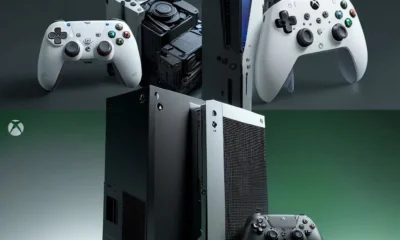
 Features2 weeks ago
Features2 weeks agoBest Cross-Platform Games for PC, PS5, Xbox, and Switch
-

 Game Reviews4 weeks ago
Game Reviews4 weeks agoHow Overcooked! 2 Made Ruining Friendships Fun
-
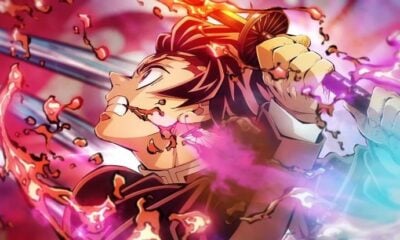
 Features2 weeks ago
Features2 weeks agoThe End Is Near! Demon Slayer’s Final Arc Trailer Hints at a Battle of Legends
-

 Features3 weeks ago
Features3 weeks ago8 Video Games That Gradually Get Harder
-

 Game Reviews4 weeks ago
Game Reviews4 weeks agoHow Persona 5 Royal Critiques the Cult of Success
-
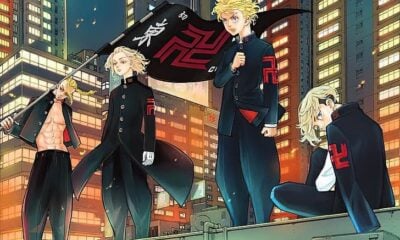
 Features2 weeks ago
Features2 weeks agoDon’t Miss This: Tokyo Revengers’ ‘Three Titans’ Arc Is What Fans Have Waited For!
-
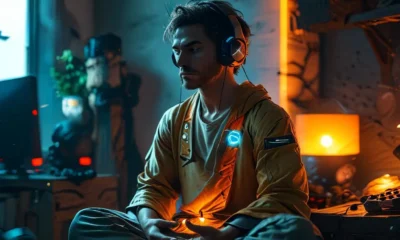
 Uncategorized3 weeks ago
Uncategorized3 weeks agoSleep Meditation Music: The Key to Unwinding
-
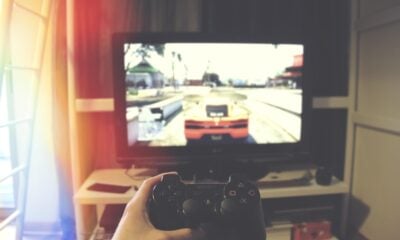
 Guides2 weeks ago
Guides2 weeks agoHow to buy games on Steam without a credit card
-
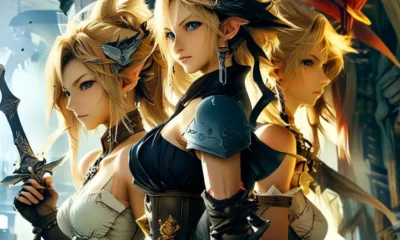
 Game Reviews2 weeks ago
Game Reviews2 weeks agoFinal Fantasy VII Rebirth Review: A Worthy Successor?






















